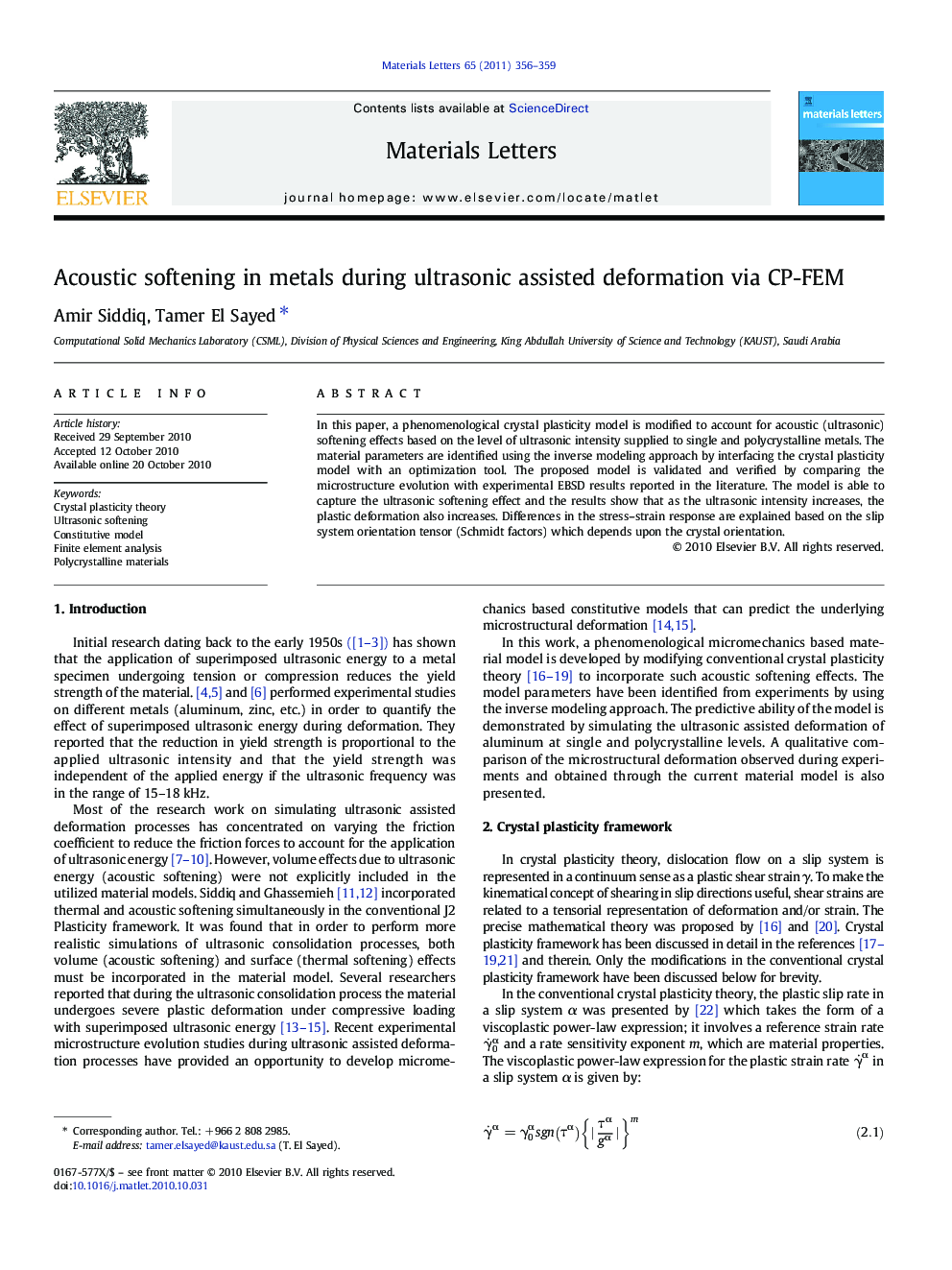| Article ID | Journal | Published Year | Pages | File Type |
|---|---|---|---|---|
| 1647861 | Materials Letters | 2011 | 4 Pages |
In this paper, a phenomenological crystal plasticity model is modified to account for acoustic (ultrasonic) softening effects based on the level of ultrasonic intensity supplied to single and polycrystalline metals. The material parameters are identified using the inverse modeling approach by interfacing the crystal plasticity model with an optimization tool. The proposed model is validated and verified by comparing the microstructure evolution with experimental EBSD results reported in the literature. The model is able to capture the ultrasonic softening effect and the results show that as the ultrasonic intensity increases, the plastic deformation also increases. Differences in the stress–strain response are explained based on the slip system orientation tensor (Schmidt factors) which depends upon the crystal orientation.
